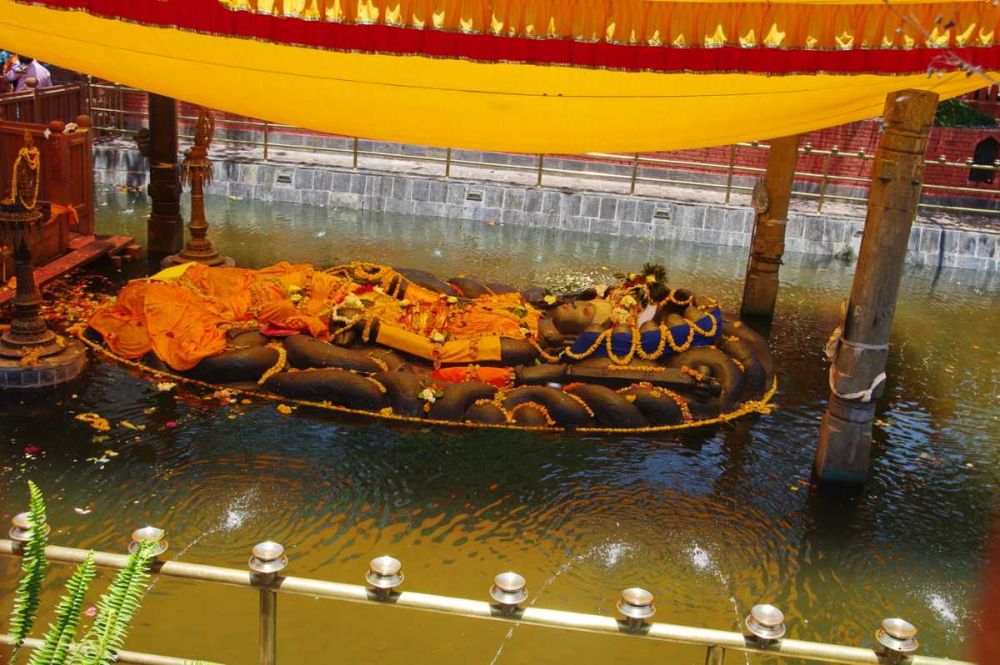

The picturesque town of Budhanilkantha, situated at the northern edge of the Kathmandu Valley, is a historical and cultural gem that stands as a testament to the religious devotion and architectural prowess of ancient Nepal. Most renowned for its remarkable stone sculpture of the sleeping Lord Vishnu, this sacred destination has been a focal point of pilgrimage for centuries.
According to historical records and folklore, the origins of the shrine at Budhanilkantha date back to the Licchavi period, around the 7th century CE. The magnificent stone carving of Lord Vishnu, which measures over 5 meters in length, is believed to have been sculpted during this era. It lies in the middle of a small pond, which represents the cosmic ocean. The expert craftsmanship and the sheer size of the deity have amazed visitors and pilgrims alike for over a millennium.
It is believed that the statue was rediscovered sometime around the 15th century, after being lost for a period of time. Since then, it has regained its status as a major religious site. Traditionally, the deity is known as Budhanilkantha, which combines the words 'Budha' (meaning 'old') and 'Nilkantha' (meaning 'blue throat'), a name attributed to Lord Shiva. However, the deity depicted is of Lord Vishnu, who is also known by the name 'Narayan'.
While Budhanilkantha has always been a significant site for devotees, modern tourism began to emerge in the late 20th century as Nepal opened up to the world. Since then, Budhanilkantha has become an essential stop not only for religious tourists but also for those interested in experiencing the intricate artistry and serene beauty of this historical site.
The blend of spirituality, history, and nature draws a wide range of visitors, from solo travelers to those on guided cultural tours. Surrounded by the Shivapuri National Park, the area also offers opportunities for nature enthusiasts and trekkers who wish to explore the lush green surroundings and biodiversity.
Today, Budhanilkantha is witnessing a trend towards immersive and experiential tourism. Visitors are increasingly interested in understanding the deep cultural and spiritual nuances of the shrine. Practices such as yoga and meditation retreats have also gained popularity, with tourists seeking to combine their visit with personal spiritual development.
Another rising trend is sustainable and responsible tourism. Visitors are more aware of their environmental impact and seek to support local communities. Efforts are being made to ensure that tourism development in Budhanilkantha aligns with the preservation of the natural surroundings and contributes to the wellbeing of the local inhabitants.
In recent years, local tourism operators in Kathmandu have been focusing on developing packages that include visits to Budhanilkantha as part of broader cultural experiences, showcasing the diverse heritage of the region.
In conclusion, Budhanilkantha, with its blend of history, culture, and spirituality, continues to captivate tourists. While honoring its traditional significance as a pilgrimage site, it embraces new tourism trends, ensuring a respectful and sustainable approach towards its growth as a destination.